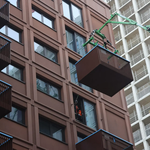lenaitch
Senior Member
The point I was attempting to make, perhaps inelegantly, was that before money is spent on any kind of public transport between communities, there needs to be an analysis of travel patterns. Just because people can travel between say, Lindsay and Peterborough or Lindsay and Toronto, how many actually do (and are reasonably projected to) and at what frequency? How much of their populations travels to others for employment, how much are is a support for their surrounding rural area, how much are retirees, etc. A business case should drive the planning.
Edit for clarification: In my earlier post I mentioned that Lindsay residents would likely benefit from commuter rail service to Peterborough. I meant that they would likely benefit from the proposed HFR, either at Peterborough itself or possibly Pontypool. I didn't intend to imply that rail service between P'boro and Lindsay was necessarily a good idea.
Edit for clarification: In my earlier post I mentioned that Lindsay residents would likely benefit from commuter rail service to Peterborough. I meant that they would likely benefit from the proposed HFR, either at Peterborough itself or possibly Pontypool. I didn't intend to imply that rail service between P'boro and Lindsay was necessarily a good idea.
Last edited:




